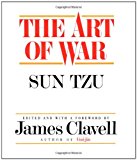by Dieter Stenger, Curator of Ordnance, Marine Corps Museum
The Marine Corps first employed light tanks in 1927 to support the Marine garrisons in China. The Marine Light Tank Platoon, East Coast Expeditionary Force, was stationed at Tientsin in support of the 3d Marine Brigade. Equipped with five light Series E tanks, leftover Army 6-Ton derivatives of the World War I French FT Renault tank, they guarded the international community at Peking.1
In July 1941, the 5th Defense Battalion, whose nucleus was formed around Marines of the 1st Provisional Brigade, assumed the occupation of Iceland that helped free British forces needed to fight elsewhere. The Brigade’s reinforced 6th Marine Regiment incorporated the under-strengthened Company A, minus 3d Platoon, 2d Tank Battalion, and consisted of 2 platoons of 12 light M3 “Stuart” tanks.
By 8 March 1942, the deployment came to an end whereby the last remnants of the Brigade left Iceland and headed State-side. 2
By 1942, five Marine defense battalions guarded key outposts throughout the Pacific. Light tank platoons were attached to the Defense Battalions on Midway (platoon of five tanks) and Johnston Islands.3
In August 1942, the 1st Marine Division landed on Guadalcanal. The 1st Tank Battalion consisted of an incredulous mix of M2A4, M3, and M3A1 tanks. Albeit obsolete by Army standards, the Marine M2A4 tanks of A Company went ashore on 7 August along side the M3 tanks of B Company, 1st Tank Battalion. The headquarters and D Company did not participate in the assault due to a lack of transport vessels. The tanks of A and B Company faced no enemy activity and assisted the infantry in crossing the Tenaru River and establish a defensive perimeter at the Lunga airfield. Thereafter, the tanks were positioned around the airfield for security and as a mobile reserve for counterattacks. In stark contrast to the quiet landings of 1st Tanks, two tanks of C Company, 2d Tank Battalion, encountered a spirited Japanese resistance at Tulagi while supporting the landings of the 2d Marines. Led by Second Lieutenant Robert J. Sweeney, the two tanks landed at 1315 at Gavutu and by 1620 led the infantry assault companies on Tanambogo by covering both the eastern and southern island slopes. Sweeney was killed at the onset of the attack by Japanese small arms fire and his tank was disabled but managed to provide continuous covering fire for the riflemen. The other tank, which had gotten too far ahead of the assault troops moving against a pill box was disabled by Japanese infantry with an iron bar and set afire with oil-soaked rags as they swarmed over the tank. Hand-to-hand combat ensued between the tank crew and the Japanese defenders until the 2d Marines closed the gap only to find 2 tankers dead, but surrounded by 42 dead Japanese.4
The only major Marine tank engagement on Guadalcanal came on 21 August, on the heels of three failed Japanese efforts to restore the situation on Guadalcanal. After the 1st Marines had effectively repulsed the attacks and then corralled the remaining Yokosuka 5th Special Naval Landing Force, Major General Alexander Archer Vandegrift, commander of the 1st Marine Division, ordered a tank attack into the rear of the Ichiki Force. A platoon of M2A4 tanks from A Company attacked across the estuary and decimated the Japanese with 37mm canister and .30 caliber machine gun fire. According to Richard Tregasis, who witnessed the action:
“It was unbelievable to see men falling and being killed so close, to see the explosions of Jap grenades and mortars, black fountains and showers of dirt near the tanks, and see the flashes of explosions under their very treads.”
During the action two tanks were disabled, one after hitting a mine, but the crews were rescued in close proximity of the other tanks. For the Battle of the Tenaru, close to 800 Japanese were killed, 15 were taken prisoner, and a few managed to escape. Marine casualties were 34 dead and 75 wounded. Disgraced by the debacle, Col Ichiki committed suicide.5
A less glamorous tank action came on 14 September, along Edson’s Ridge, against a battalion-sized Japanese formation east of Bloody Ridge. After a hasty reconnaissance, six M3 tanks from B Company moved forward, however without infantry support. Almost immediately two tanks fell prey to an anti-tank gun, and a third plunged 30-feet into the abyss (Tenaru) after charging across a field and over a grass hut. A forth tank was hit by an anti-tank gun, and the fifth was hit in the tracks by another anti-tank gun. Only one of six tanks returned to friendly lines: 1 officer and 13 Marines were killed.6
The lack of tank-infantry coordination beyond the beaches of Guadalcanal can be attributed to the short-sighted tank doctrine of the 1930’s that prescribed only the clearing of enemy beach emplacements and to provide further support inland. With such a broad mission statement and no previous training that placed emphasis on mechanized combine arms tactics, it is no wonder that the results were less than enviable. Guadalcanal clearly outlined the limitations of light tanks operating in a jungle environment and their vulnerability to infantry when operating without infantry support. The tank-infantry doctrine was not refined until June 1944 on Saipan, where the fighting “…proved the need for a weapon which could operate closer to the infantry, a weapon which the infantry could direct and control…” The tank-infantry concept flourished on Saipan since the terrain was better suited for mechanized operations. On Tinian in July 1944, the tank-infantry coordination was excellent, whereby one reinforced tank company of 18 medium M4 “Sherman” tanks, a platoon of 4 flamethrower tanks, and 2 light M5 “Stuart” tanks were assigned to each infantry regiment.7
By the time Marines landed on Saipan in June 1944, only a few light tanks (flame) remained in the tank-infantry equation that was merely 3 years old. Since the first tank engagements on Guadalcanal, Marine light tanks provided a testing ground for the unexplored mechanized combined arms tactics that evolved into an effective combat arm of the air-ground team concept.
Bibliography
- Kenneth W. Estes, Marines Under Armor, p.7.
- Col James a. Donovan, USMC (Ret.), Outpost in the North Atlantic: Marines in the Defense of Iceland, p.1 and 30-31, and Steven J. Zaloga, U.S. Marine Tanks in World War Two, pp. 6-7, Kenneth W. Estes, Marines Under Armor, p.37.
- LtCol Frank O. Hough, History of the US Marine Corps Operations in WWII, p219, and Dr. Ed Gilbert, unpublished paper, Tanks Tactical And Other Markings Of U. S. Marine Corps Tank Units, 1941 - 1945.
- Hough, Marine Corps Operations in WWII, Vol. I, p. 258, 269, and Estes, Marines Under Armor, 47-49.
- Hough, Marine Corps Operations in WWII, Vol. I., p. 288-91, and Estes, Marines Under Armor, 49-50.
- Hough, Marine Corps Operations in WWII, Vol. I, p. 308, and Estes, Marines Under Armor, 50-51.
- Shaw and Frank, Marine Corps Operations in WWII, Vol. V., p. 722, and Estes, Marines Under Armor, 50.
An M2A4 off-loading from a ship to a barge for landing on Guadalcanal, Solomon Islands. Photo: Marine Corps Museum
An M2A4 leading a tank column of M3 tanks on Guadalcanal. Photo: Marine Corps Museum
An M2A4 of the 3rd Platoon, A Company, 1st Tank Battalion on the beach at Guadalcanal. Photo: National Archives 




